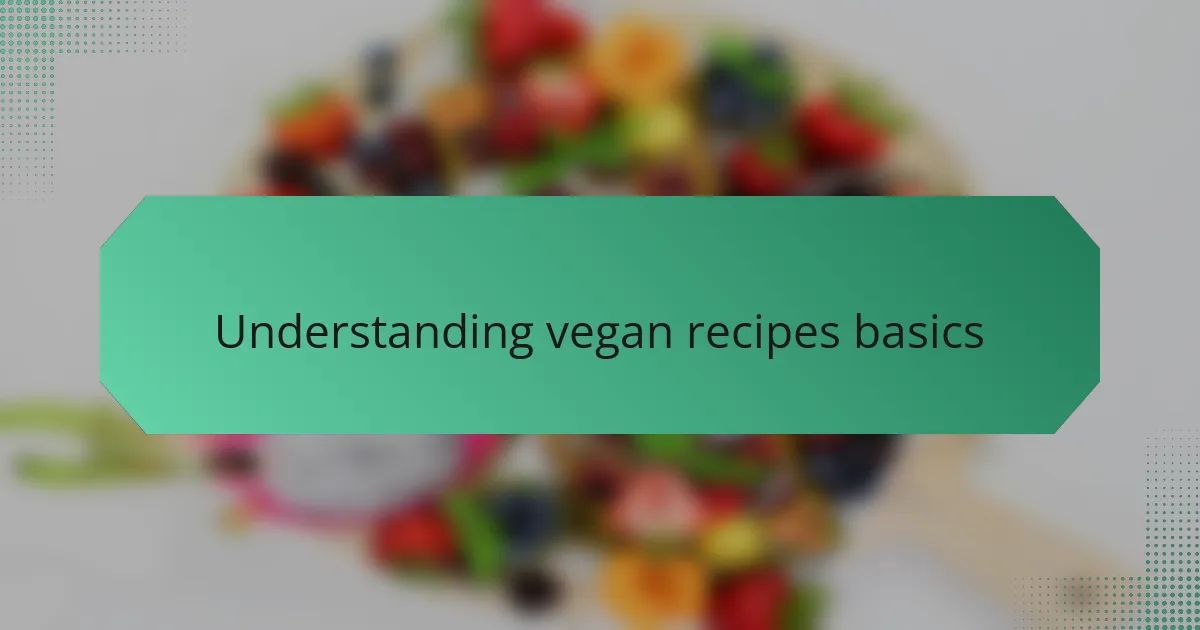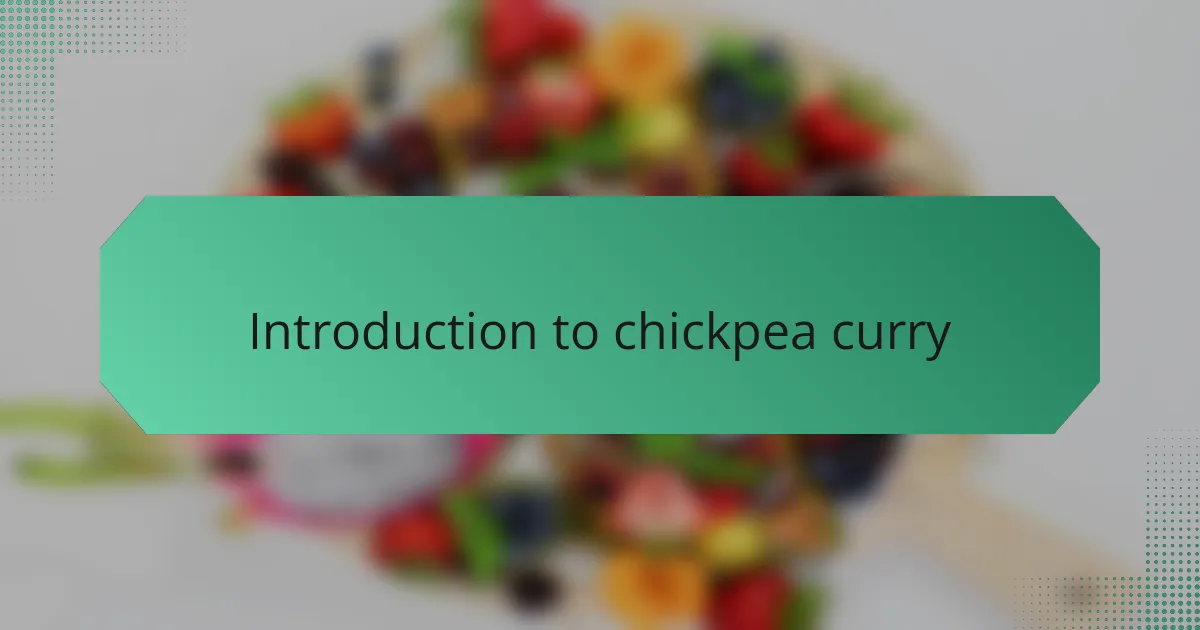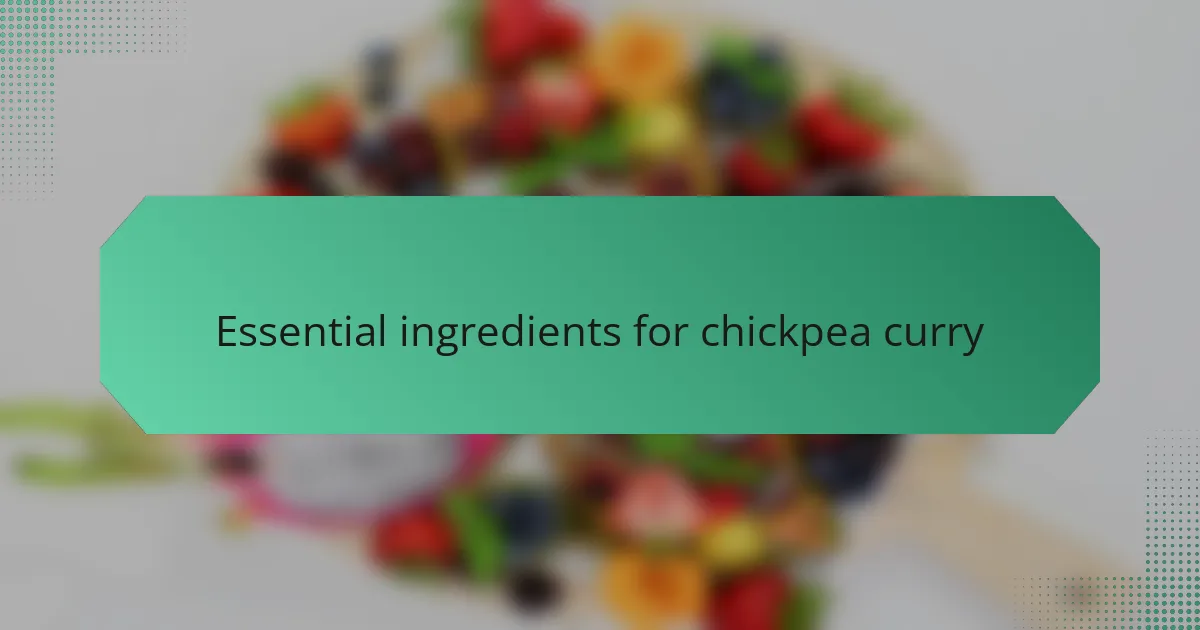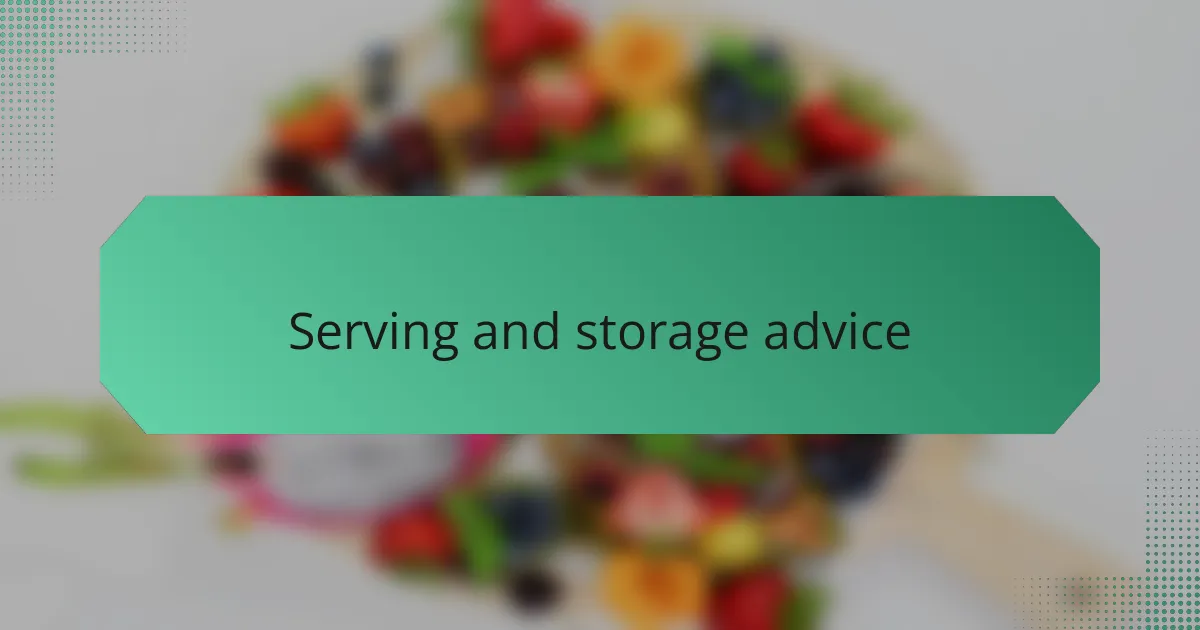Key takeaways
- Vegan cooking emphasizes creativity with whole foods like legumes, grains, and vegetables, focusing on natural nutrition.
- Chickpea curry is a versatile and comforting dish that blends simple ingredients with spices for rich flavor.
- Essential ingredients for chickpea curry include chickpeas, canned diced tomatoes, coconut milk, and spices like turmeric, cumin, and coriander.
- Proper techniques, such as toasting spices and adjusting liquid, enhance the dish’s flavor and texture, improving the overall cooking experience.

Understanding vegan recipes basics
When I first dived into vegan cooking, I quickly realized that understanding the basics wasn’t just about swapping ingredients—it was about embracing a whole new way of thinking about food. Have you noticed how many recipes focus on textures and flavors that come from plants, rather than just mimicking meat or dairy? That shift in mindset made me appreciate the creativity behind each dish.
One thing I learned early on is that vegan recipes often spotlight whole foods like legumes, grains, and veggies, which provide natural nutrition and depth. It felt rewarding to cook meals knowing I was choosing ingredients that support not just flavor but also health. Don’t you find it exciting when simple ingredients transform into something satisfying?
What helped me the most was understanding the role of spices and seasoning in vegan cooking—without them, dishes can taste dull. Instead of relying on butter or cream for richness, I started experimenting with coconut milk, nut butters, and herbs. It made me realize that vegan recipes aren’t restrictive; they open doors to endless possibilities.

Introduction to chickpea curry
Chickpea curry quickly became one of my go-to dishes because it’s both comforting and surprisingly simple to make. Have you ever noticed how chickpeas soak up the warm spices, turning each bite into a burst of flavor? That’s what drew me in—the way basic ingredients come alive when you add a thoughtful blend of turmeric, cumin, and coriander.
I remember the first time I made chickpea curry, I was amazed at how pantry staples like canned chickpeas and diced tomatoes could transform into such a rich and satisfying meal. It felt like uncovering a little secret in vegan cooking that didn’t compromise on taste or heartiness. Isn’t it amazing how legume-based dishes can feel so indulgent yet nourish you deeply?
What makes chickpea curry special for me is its versatility—you can tweak the spices, the heat level, or even the creaminess depending on your mood or what’s in your kitchen. This flexibility turned out to be a huge confidence booster as I continued exploring vegan recipes, encouraging me to trust my own palate and creativity. Have you found that one dish that adapts perfectly to your taste every time? That’s exactly what chickpea curry has become for me.

Essential ingredients for chickpea curry
For me, the heart of chickpea curry lies in a few simple yet essential ingredients. Chickpeas are obviously the star—they bring that creamy, nutty texture that feels both satisfying and comforting. But it’s the combination of spices like turmeric, cumin, and coriander that really wakes up the dish and gives it that warm, inviting flavor.
I can’t overstate how important canned diced tomatoes and coconut milk are in my recipe. The tomatoes add a subtle acidity that balances the richness, while the coconut milk lends a smooth creaminess without any dairy fuss. When I first added coconut milk, I was surprised by how it elevated the dish to something truly indulgent yet still vegan.
Have you ever thought about how spices can carry a dish from bland to brilliant? For chickpea curry, using fresh garlic and ginger makes all the difference for me. They infuse the curry with a bright, zesty kick that keeps every bite exciting. It’s these basics—chickpeas, tomatoes, coconut milk, and spices—that form the backbone of a perfect chickpea curry.

Step by step cooking process
The first step I always take is gently sautéing the onions, garlic, and ginger until they’re golden and fragrant. Have you noticed how this simple action releases a wave of aroma that instantly makes your kitchen feel warm and inviting? It’s like the curry’s soul begins right there, setting the stage for all the flavors to come together.
Next, I sprinkle in the turmeric, cumin, and coriander, watching as the spices toast briefly in the pan. This step might seem small, but in my experience, it’s crucial—it unlocks the spices’ full potential and deepens the dish’s complexity. I often find myself savoring that moment, knowing it’s where the magic starts to build.
Finally, adding the chickpeas, diced tomatoes, and coconut milk brings everything home. I stir it all together patiently, letting the curry simmer and thicken while the flavors meld. Don’t you love it when the kitchen fills with those rich, comforting scents, and you know a satisfying meal is just around the corner? For me, this is the joyful part of cooking chickpea curry—it feels like creating something truly nourishing from humble ingredients.

Tips and tricks from my experience
One tip I’ve come to rely on is giving the spices enough time to bloom in the oil before adding other ingredients. Have you ever rushed this step? I have, and the curry ended up tasting flat. Taking a minute or two to toast the turmeric, cumin, and coriander really wakes them up—it’s like they transform from ordinary powders into a fragrant, flavorful foundation.
Another trick that saved me was using canned chickpeas, but rinsing them thoroughly to remove any excess salt or starchy residue. Early on, I skipped that, and the curry felt heavier than it should have. Once I started rinsing, the chickpeas tasted fresher and blended better with the spices and coconut milk. It’s a small step, but it makes a big flavor difference.
Lastly, don’t be afraid to adjust the texture with a splash of water or more coconut milk as the curry simmers. I used to worry that changing the liquid would mess up the consistency, but I learned to trust my instincts. Sometimes the chickpeas soak up more liquid than expected, and a little extra creaminess keeps the curry smooth and comforting—just like I want it every time. Have you found that flexibility makes the cooking process more enjoyable? For me, it’s the key to making this dish feel truly mine.

Serving and storage advice
When it comes to serving chickpea curry, I like to pair it with warm, fluffy basmati rice or some soft naan bread. Have you ever noticed how the curry’s rich sauce soaks beautifully into the grains, making every bite comforting and satisfying? For me, that combination feels like the perfect hug on a plate.
Storing leftovers has always been straightforward. I usually let the curry cool completely before transferring it to an airtight container and popping it in the fridge. I’ve found it keeps well for up to four days—sometimes lasting longer if I’m lucky! Reheating gently on the stove helps preserve the flavors and creamy texture.
One thing I learned the hard way is to avoid freezing chickpea curry in a container that’s too small—it tends to dry out and lose its charm. Instead, I portion it out in freezer-safe containers with a little extra coconut milk added in. Have you tried freezing your curry? From my experience, it’s a game changer for quick, nourishing meals on busy days.